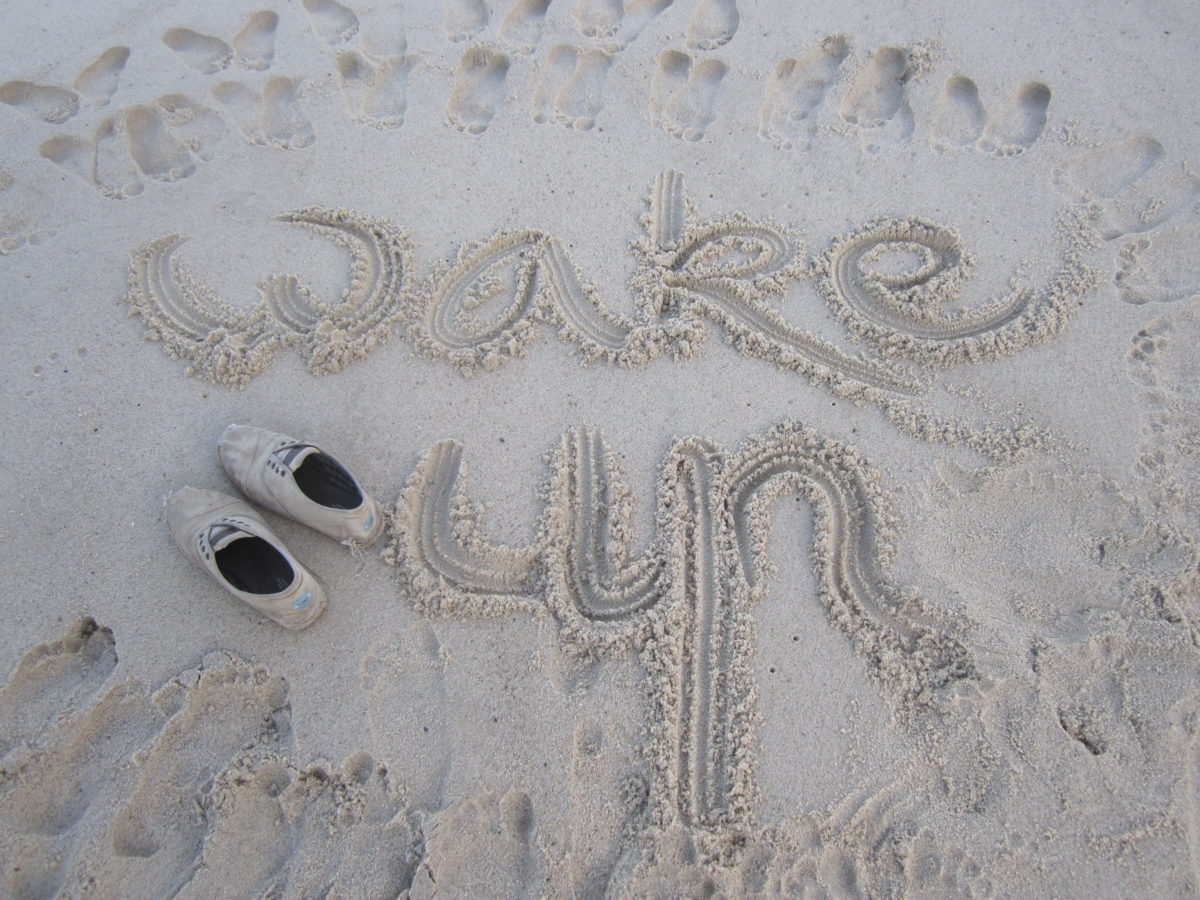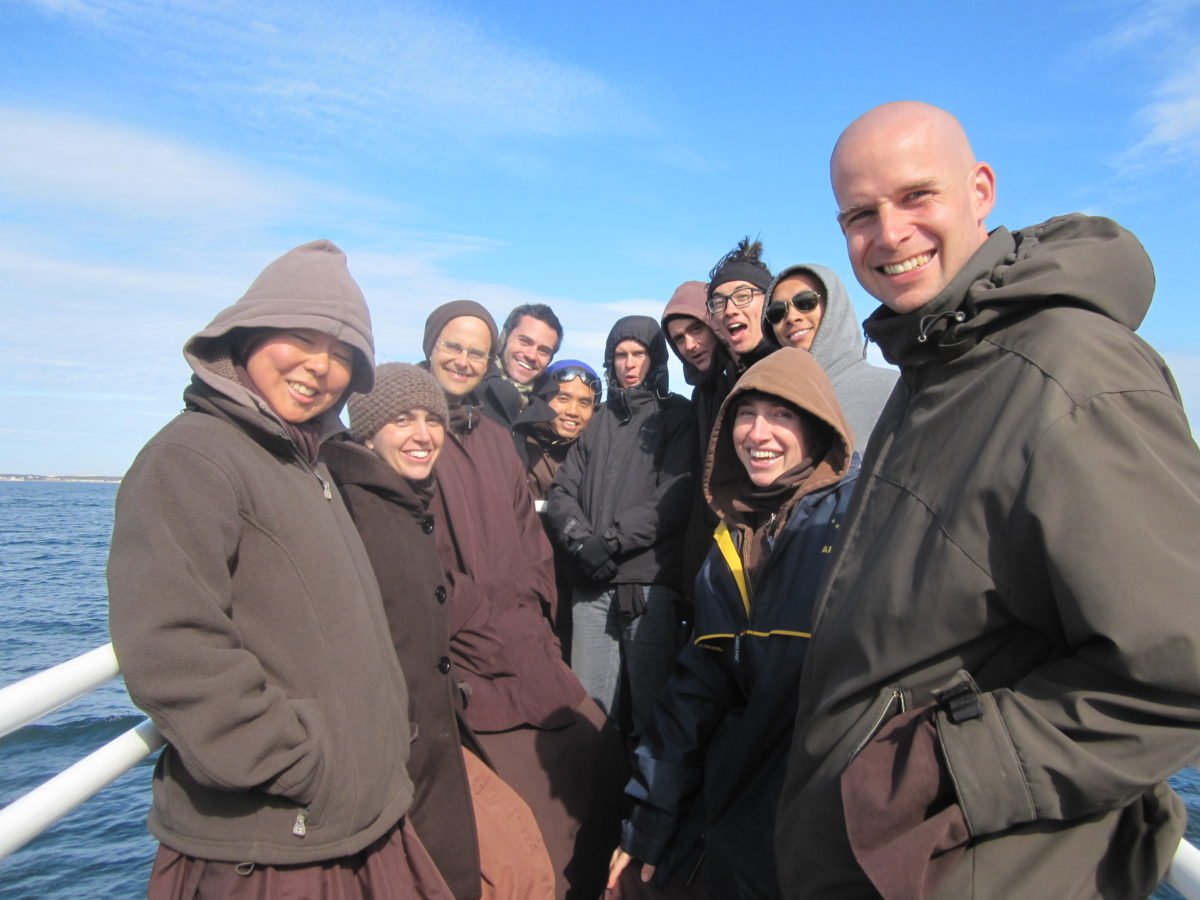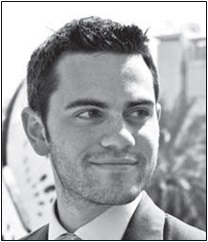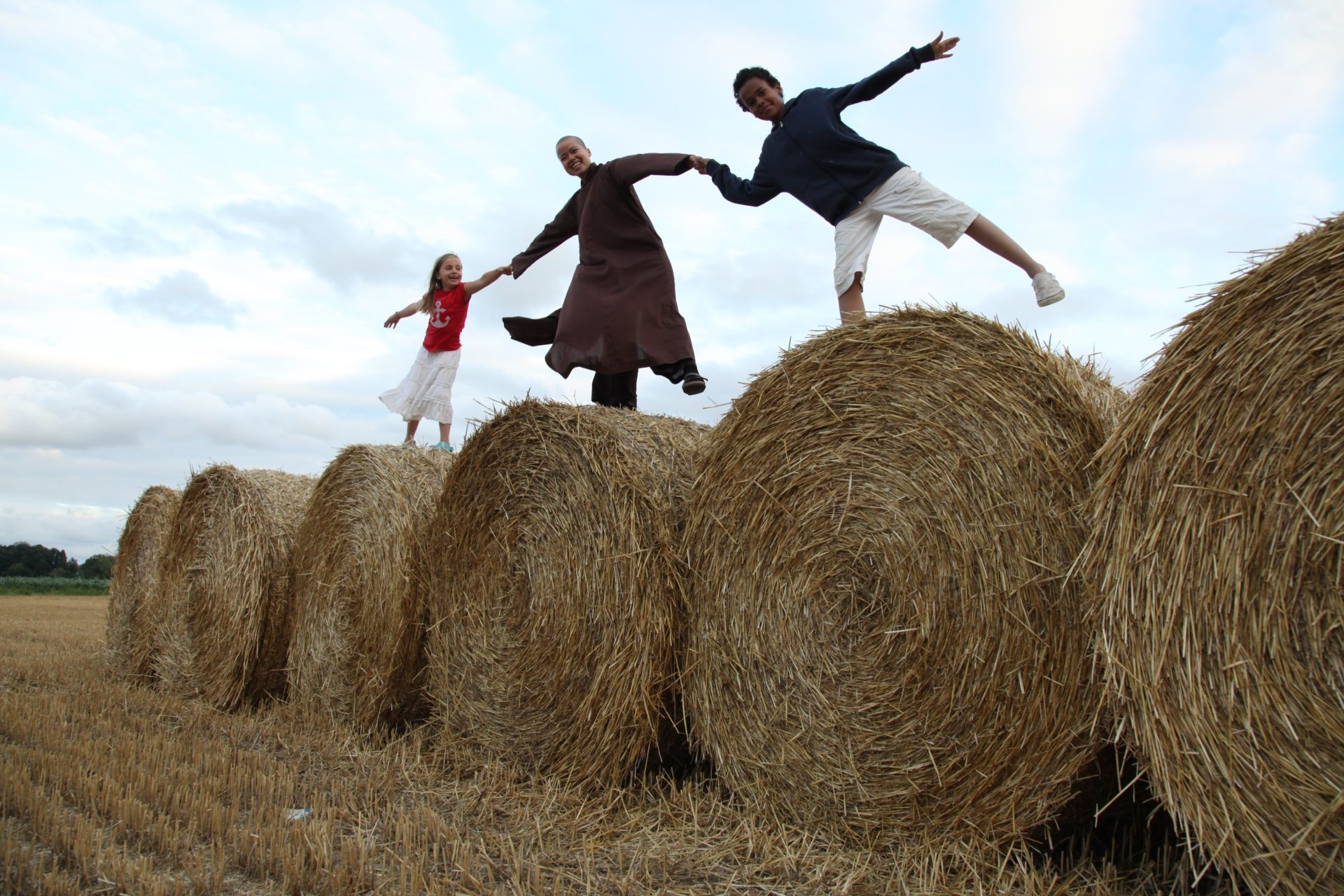Organizing a Wake Up Tour
By Brandon Rennels

A year ago I was sitting at a cafe in Ann Arbor, Michigan, enjoying breakfast with a beloved professor from university. When I was in school he taught a course entitled Psychology of Consciousness, which was my first introduction to mindfulness practice. Peace is Every Step happened to be required reading,
Organizing a Wake Up Tour
By Brandon Rennels

A year ago I was sitting at a cafe in Ann Arbor, Michigan, enjoying breakfast with a beloved professor from university. When I was in school he taught a course entitled Psychology of Consciousness, which was my first introduction to mindfulness practice. Peace is Every Step happened to be required reading, and after I finished the course I wondered why this material wasn’t taught in every classroom.
That day, I had gone to the professor seeking guidance. For a few years I had been working internationally in the business world as a management consultant. During this time I developed a skill set for turning high-level strategy into tactical recommendations, and for the cultural sensitivity necessary to bring messages to diverse audiences. While I enjoyed the problem-solving nature of my work, I felt I should be serving a different clientele; it was people, not corporations, I wanted to help grow. I had been keeping up my spiritual practice and also knew there was a growing interest in mindfulness in major U.S. institutions, especially in the field of education.
I knew I wanted to make a change but I didn’t know where to start.
My professor mentioned that there was a growing number of interested educators with Ph.D.s, and a wealth of mindfulness practices. Perhaps what was missing, he said, was support in managing the various threads and actually implementing these new models of learning. He asked: Instead of abandoning my business training, could I somehow integrate head and heart by leveraging my consulting skills to support the realms of mindfulness and education?
I had no idea. But it seemed like the right question to ask. As with all great teachers, he merely pointed the way... and I took it upon myself to forge ahead into the unknown.
Leap of Faith
A few months later I decided to take a leap of faith by embarking on a six-month leave of absence from my corporate post. I had two stated intentions: 1) immerse myself in mindfulness practice, and 2) learn how I might support its growth in education. My first stop was a weeklong retreat at Deer Park Monastery in California. I figured it would be an opportunity for immersion. Little did I suspect that both of my intentions would be watered.
On encouragement from a friend, towards the end of the retreat I worked up the courage to ask a monastic if I might be of service. I explained my background and that I could offer my support as a volunteer for the next few months. Much to my surprise, his eyes opened wide: “Ah ha! The universe is aligning.” He told me there were a couple of education initiatives that were searching for support from someone with a business/organizational skill set. Now it was my eyes that opened wide.
Supporting the Sangha
The next month, a week before the east coast Wake Up tour, I arrived at Blue Cliff Monastery in New York. The monastics and I were unsure how I was going to help, but in that not-knowing was a freedom to respond appropriately to whatever situation arose.
Much of the work had already been completed by the time I arrived, and we were in the final stages of preparation for the tour. Entering any project mid-stream can feel overwhelming; ideally, you are there from the beginning. In most cases, however, you don’t have that luxury. More importantly, it just isn’t necessary. Asking questions, listening deeply, and being patient are all it takes to be able to contribute.
My intention was to be as helpful as I could in supporting the Sangha. I began by asking one of the main organizers, “Is there anything you need help with?” When he was feeling more comfortable, I went to the other organizers and asked them. Then I began asking a different question: “This looks like it could use help; do you want me to work on it?” Over time, this evolved into: “I went ahead and took care of this. Let me know what you think.”
This approach created conditions for me to take on operational items such as supporting the website and managing the email list, as well as strategic areas such as overseeing social media presence and helping to allocate the advertising budget. My responsibilities grew organically, and were nurtured in a supportive and collegiate environment with the backdrop of a serene monastery. Not a bad way to work!
A week later the team at Blue Cliff set out on the road to begin the tour.
Space to Breathe
Our first events were in Boston, where we convened as an entire group. The day before the Harvard University event we had a number of decisions to make, and the full community of fifteen-plus monastic and lay friends gathered around a large wooden table. I had become more familiar with the working styles of the group and was looking forward to an unfiltered view of how a Fourfold Sangha makes decisions.
Coming from the corporate world, I was accustomed to a top-down, fast-paced, heavily structured decision-making process. The monastic community operates bottom-up, in a very organic and non-hierarchical way. The meeting opened with three sounds of the bell, and we began by speaking one a time. One of the primary issues was whether or not we were going to visit Occupy Boston. Many questions were raised: How political is the event? Could we go just as spectators? What kind of message would we be sending by going? Should we just go to invite people to our sitting meditation? There were divergent viewpoints, but we eventually reached a full consensus. Afterwards it was explicitly stated that the meeting was over and it was time to let go of any residue and move on. While it was a lengthy process, shortening it would inevitably result in some people not being heard. By giving everyone space to express themselves, regardless of outcome there was no resentment and everyone felt respected.
The following day, over one hundred people showed up for a Day of Mindfulness at Harvard. I volunteered to staff the registration desk, where each attendee would be asked a series of questions that were entered into an Excel file. It was a chance for me to practice my efficiency skills in a potentially stressful environment, as most people would be arriving in a hurry just a few minutes before the start time. I felt it was important for this process to go smoothly, knowing this was the first impression most people would have.
Sitting at the desk, I found myself simultaneously wondering how fast I could process each person’s info and how many people I could get to smile. While I had my verbal script and keyboard strokes down to a science, I protected the space to provide a warm welcome to every person and to allow them space to breathe.
One hundred people came, one hundred people went. I was gifted with many smiles.

Harmony Was the Way
As the tour progressed I gained more responsibility, and eventually some of the monastics started lovingly (I think) introducing me as “the manager.” While they were mostly joking (I think), in this structure I was perhaps as close to a lay manager as one could get.
A fundamental skill of being a good manager is knowing when to delegate tasks to others. Having faced this situation in the past, I was familiar with the trade-offs. Do the task yourself and it will likely get done faster and with more accuracy. Give the task to others and while it may take longer (and they may not want to do it), you will be teaching someone. What was unique about this situation, however, was the underlying objective. In the corporate world, the priority is productivity; here, the priority was harmony. Ideally you have both, but oftentimes you need to choose which is more important: getting it done or making everyone happy. For the first time in my life, it was clear that harmony was the way.
Near the end of the tour we aspired to send out a “feedback survey” for participants to share their thoughts following the workshops. There were multiple purposes here: for the participants, to provide an outlet to reflect on their experiences and encourage them to keep up their practice; for us, a chance to learn what went well and how we could improve for the next tour. Timing was important; if the survey was sent out too late, response rate would likely be low and the experience would no longer be fresh in their minds.
We decided to administer the survey using two online tools with which the monastics didn’t have much experience. I spent time training one of the tech-savvy nuns how to create the survey, send it out, track responses, etc. Two weeks later the surveys hadn’t yet been sent and I was becoming slightly anxious. I sat with this anxiety and it passed with the understanding of how busy our lives can be. I emailed the sister asking if she needed help, which I would be genuinely happy to provide. The next day I awoke to find all the surveys had been sent out, along with a friendly reply back thanking me for my encouragement. I smiled.
Looking back at that afternoon with my professor in Ann Arbor, I couldn’t have imagined a more direct manifestation of my desire to integrate head and heart. Perhaps my greatest lesson on this tour was that of trust. Trusting in myself and my abilities, trusting in others and their capacity to support, and trusting in the universe to light the way.

Since the east coast Wake Up tour, Brandon Rennels decided to resign from his post in the corporate world and continue to support mindful education initiatives while deepening his own practice. He spent three months in Plum Village this past winter, practicing and assisting with the Applied Ethics initiative, and is now heading back to California for the next chapter of his journey... just in time for another Wake Up tour.

